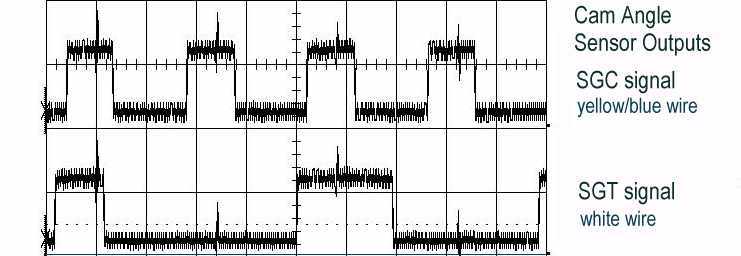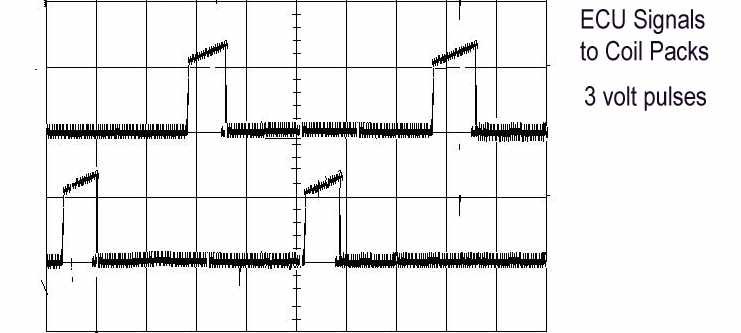Ignition Timing Signals - My 94 Miata
For my thoughts on the 94 miata's ignition system, see this overview.
From a 1994 Miata taken with a LeCroy Digital Storage Scope

These signals correspond to two revolutions of the engine (or one revolution
of the camshaft). The cam angle sensor (or CAS) has two signals.
1) The SGT signal is pulses of equal length. Each ttells the computer when a
cylinder is at TDC and is ready to get spark and fuel.
2) The SGT signal has two pulses of different widths. The computer uses this
difference to determine the exact position of the crankshaft, i.e, it knows
which pulse corresponds to which cylinder.
As engine speeds change, all the pulses will be longer or shorter, but in a
given interval, they are close enough so that the computer can measure them
and tell them apart. For example, at idle or 800 rpm, the above trace would
be .15 seconds long. At redline, or 7200 rpm, the trace would be .0166 seconds.

The computer sends a 3 volt pulse to each of the two coil packs to make them
spark.The 1994 coil pack has a transistor circuit that will power up the coil
primary winding. When the pulse drops back to zero volts, the power to the primary
winding is removed and the secondary of the coil fires, giving you a spark.

On the 1994, the tachometer signal is driven by the transistor circuit in the
coil pack. It is a negative pulse, coming down from a DC level of about 10 or
12 volts.
This signal is completely diffrent on a 1990-1993 miata.On 1996 miatas, Mazda
changed the coilpack design and I have no idea what the tach signal looks like.
Disclaimer: Not a certifed auto mechanic. Not a
Mazda technician. The information on this page is my own interpretation and
may be flat-ass wrong. Use at your own discretion.


